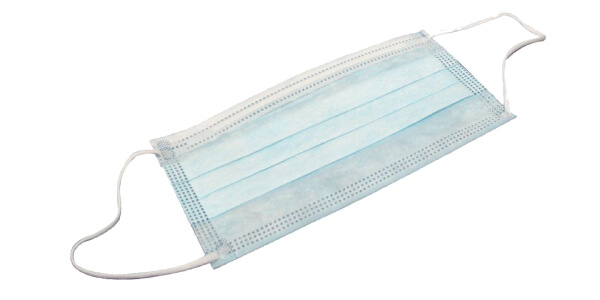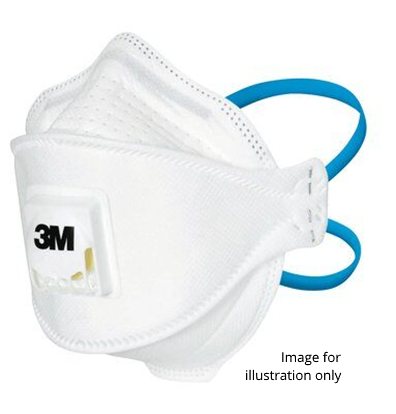Face Masks and Coronavirus: A Kent Express Guide
This information is intended for general guidance only. Please refer to Public Health England to keep up to date with the latest advice.
The latest PHE guidelines suggest that dental professionals working in direct patient care should use the following items of PPE in order to reduce the risk of transmission of Coronavirus:
- Single use disposable gloves: Shop Gloves
- Single use disposable plastic apron: Shop Aprons
- Single or sessional use fluid-resistant (Type IIR) surgical mask: Shop Masks
- Single use eye/face protection: Shop Visors
In addition, if performing an aerosol generating procedure (AGP), a single-use Filtering Face Piece (FFP) respirator should be worn, ideally the FFP3[DD1] standard although FFP2 can be worn if FFP3 is unavailable, plus a surgical gown.
What kind of masks actually protect against Covid-19?
There is some confusion about the difference between the FFP masks and the surgical masks. There is a clear difference between a surgical mask and a respirator, so here is a summary.
Surgical masks and surgical respirators vary in intended use, fit against the face and required testing and approval standards.
Surgical masks: What is a Type 2 Face Mask?
A Type II (or Level 2) surgical mask is what you might think of as a “regular” mask used in day to day practice. Type II is a European standard that’s equivalent to the American standard Level 2. Type IIR are fluid resistant masks.
These masks are loose fitting, cover the nose and mouth, and are intended first to protect the patient and working environment from bacteria shed in liquid droplets and aerosols coming from the wearer’s nose and mouth. To some extent they also protect the wearer’s face from possible splashes of potentially contaminated liquids.
They are not sized for individual fit and so will not pass a fit test. They’re single use, for a maximum of 2-3 hours, and should be discarded when contaminated with blood or other bodily fluids. They must be disposed of as clinical waste.
Surgical masks or medical face masks are classified as class 1 Medical Devices under the Medical Devices Directive 93/42/EEC. They are intended to be used in operating theatres and healthcare settings with similar requirements.
In Europe, surgical masks must bear a CE-mark and comply with the requirements defined in EN 14683 “Medical face masks – requirements and test methods.” on the construction, design and technical performances.
The version of EN 14683:2014 includes 4 tests to classify the masks in 3 types:
1) Bacterial Filtration Efficiency (BFE)
The BFE measures the percentage efficiency at which the face mask filters bacteria passing through the mask.
2) Breathing Resistance (Delta P) or the Differential Pressure
This test determines the air permeability of the mask, and determines its “breathability”. It is measured by determining the difference of pressure across the mask under specific conditions of air flow, temperature and humidity. The lower the delta P of the medical face mask, the better and easier it is for the wearer to breathe through it.
3) Splash Resistance (ISO 22609)
The splash test measures the fluid resistance of the mask.
4) Microbial Cleanliness (EN ISO 11737-1)
“Cleanliness” of the medical face mask is defined by freedom from population of viable micro-organisms on a product and/or a package. The standard stipulates that the medical face mask must be tested according to the EN ISO 11737-1 standard which provides guidance for the enumeration of the viable microorganisms on a medical device, also referred to as “bioburden”.
When tested according to EN ISO 11737-1, the bioburden of the medical mask shall be inferior to 30 CFU (Colony Forming Units) per gram tested.
They are single use, with a maximum wear time of 2-3 hours, and should be discarded when they become contaminated with blood or other bodily fluids.
Please note that EN14683 indicates that Type I masks are ‘general purpose masks’ intended to be worn by patients and visitors to reduce the spread of infections.
Respiratory masks: Do FFP2 and FFP3 masks protect against Coronavirus?
Respiratory masks are classified using the codes FFP1, FFP2 and FFP3 under EN 149-2001+A1-2009. These respirators are tight fitting and create a facial seal, designed to protect against solids, water-based aerosols and oil-based aerosols. They can be valved or non-valved. Non-valved respirators provide two-way protection by filtering both inflow and outflow of air.
The standard reviews filter efficiency and breathing resistance to categorize:
1) Filtration Efficiency:
The higher the FFP number, the more protection the respirator can provide if it is used properly.
2) Breathing Resistance:
These masks are also tested to determine their total inward leakage, based on their filtration.
Respirators rely on having a good seal with the wearer’s face and should be fitted.
There are two types of fit tests: Qualitative and quantitative fit.
Qualitative fit testing is a pass-fail test that uses the sense of taste or smell and the user’s reaction to an irritant in order to detect leakage into the respirator’s face piece.
- Quantitative fit testing uses a machine to measure the actual amount of leakage into the face piece.
Valved vs Non-valved Respirators
Valved respirators make it quicker and easier to exhale air compared to non-valved respirators, so may be more comfortable to wear. Also less moisture tends to build up inside the respirator. However they can also let particles out from the wearer into the air without filtering, so clinical judgement should be used when deciding what type of respirator to wear.
They are single use and should be discarded when wet or visibly dirt, damaged or deformed, when they no longer form an effective seal to the face, when breathing becomes more difficult, or when contaminated with blood, respiratory or nasal secretions, or other bodily fluids.
What is the efficacy of standard face masks compared to respirator masks in preventing the transmission of COVID-type respiratory illnesses?
Standard surgical masks are as effective as respirator masks for preventing infection of healthcare workers in outbreaks of viral respiratory illnesses such as influenza. No head to head trial of these masks in COVID-19 has yet been published, and neither type of mask prevents all infection. Both types of mask need to be used in combination with other PPE measures. Respirator masks are recommended for protection during aerosol-generating procedures. Rapid reviews on wider PPE measures, and what counts as an AGP, are ongoing.
You Might Also Like:











